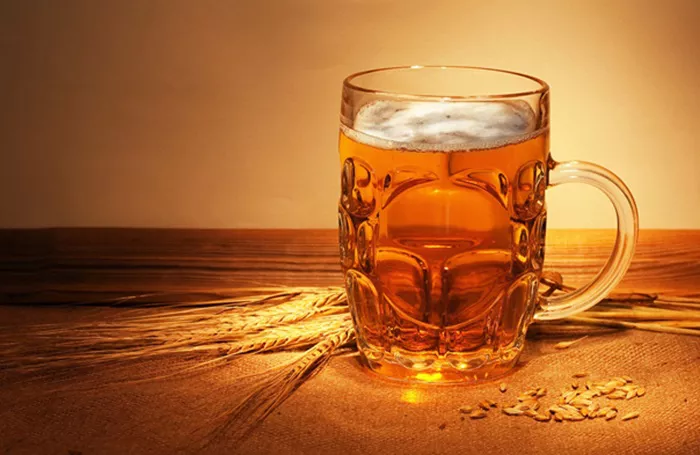Beer is one of the oldest and most widely consumed beverages in the world. It has a rich history, dating back thousands of years. While many enjoy beer for its taste and social aspects, few consider its nutritional content. One important element to understand is the sugar content in beer. Sugar affects the flavor, mouthfeel, and overall enjoyment of the drink. It also plays a role in the fermentation process, impacting the alcohol content and body of the beer.
When it comes to sugar in a pint of beer, the amount can vary significantly based on the style and brewing process. Generally, most beers contain some residual sugars after fermentation. These sugars come from the malt used in brewing. Different types of beer, such as lagers, ales, stouts, and IPAs, have varying sugar levels. Knowing the sugar content can help consumers make informed choices about their beer selections.
The Basics of Beer Sugar Content
What Is Sugar in Beer?
Sugar in beer primarily comes from malted grains. During brewing, these grains are mashed to convert starches into sugars. This process creates fermentable sugars, which yeast then consumes during fermentation. This process not only produces alcohol but also carbon dioxide. However, not all sugars are fermented completely. The remaining sugars contribute to the beer’s sweetness and body.
Measuring Sugar in Beer
To understand how much sugar is in a pint of beer, we first need to define the measurement. Sugar content in beer is usually measured in grams per liter (g/L) or degrees Plato (°P). One pint of beer is approximately 473 milliliters. Depending on the style, the sugar content can range widely. Light lagers may have around 2 to 5 grams of sugar per pint, while sweeter styles like stouts can contain 10 to 20 grams or more.
Factors Affecting Sugar Content
Beer Style
Different beer styles inherently contain different sugar levels. For example, a typical light lager might have minimal residual sugars, resulting in a crisp, clean taste. On the other hand, a stout or porter often has more residual sugar, leading to a richer, sweeter flavor profile. Here’s a breakdown of some common beer styles and their sugar contents:
Lagers: Generally low in sugar, around 2-5 grams per pint.
Ales: Moderate sugar content, approximately 4-10 grams per pint.
Stouts and Porters: Higher sugar levels, often 10-20 grams or more per pint.
IPAs: Sugar content varies, typically around 5-10 grams per pint.
Brewing Techniques
Brewing techniques also impact sugar content. For instance, the length of fermentation can influence how much sugar remains. A shorter fermentation time may leave more residual sugars, while longer fermentation usually results in drier beer. Additionally, the use of specialty malts can add sweetness to the final product.
See Also: What Mixes are Well with Beer?
The Fermentation Process
How Fermentation Works
Fermentation is the key process that converts sugars into alcohol. Yeast consumes the sugars, producing alcohol and carbon dioxide as byproducts. The efficiency of fermentation can vary based on yeast strain, temperature, and the specific gravity of the wort. A higher specific gravity means more sugars are present before fermentation begins, potentially leading to higher alcohol and sugar levels.
Residual Sugars
After fermentation, some sugars remain unfermented. These residual sugars contribute to the beer’s flavor and sweetness. Factors such as yeast strain and fermentation temperature can affect the amount of residual sugar. For example, certain yeast strains are less efficient at fermenting certain sugars, resulting in sweeter beers.
Sugar and Flavor
The Role of Sugar in Taste
Sugar plays a crucial role in beer flavor. It can enhance the sweetness and balance the bitterness from hops. This balance is essential for creating a well-rounded beer. Some consumers prefer sweeter beers, while others enjoy drier options. The sugar content influences not only taste but also mouthfeel. Beers with higher sugar content may feel fuller and smoother compared to drier styles.
Sugar and Body
The body of a beer refers to its weight and texture in the mouth. Beers with higher sugar content generally have a fuller body. This is often experienced as a creamier or thicker mouthfeel. In contrast, lighter beers with lower sugar content tend to have a more refreshing and crisp sensation.
Health Implications of Sugar in Beer
Moderation is Key
While sugar can enhance the flavor of beer, it’s important to consume it in moderation. Excessive sugar intake can lead to health issues such as weight gain and increased risk of diabetes. Being aware of the sugar content in beer can help consumers make better choices for their health.
Comparing Beer to Other Beverages
When comparing beer to other alcoholic beverages, it’s useful to consider sugar content. For example, cocktails often contain added sugars, which can significantly increase their overall sugar content. Wine typically has lower sugar levels than sweeter beers but can vary based on the type. Understanding these differences can help consumers choose their drinks wisely.
Conclusion
In conclusion, the sugar content in a pint of beer varies greatly depending on the style and brewing process. From light lagers with minimal sugar to rich stouts packed with sweetness, there’s a wide spectrum of options available. Understanding how sugar affects flavor and body can enhance your beer-drinking experience. Always consider moderation, and enjoy the diverse world of beer responsibly!
You Might Be Interested In:


